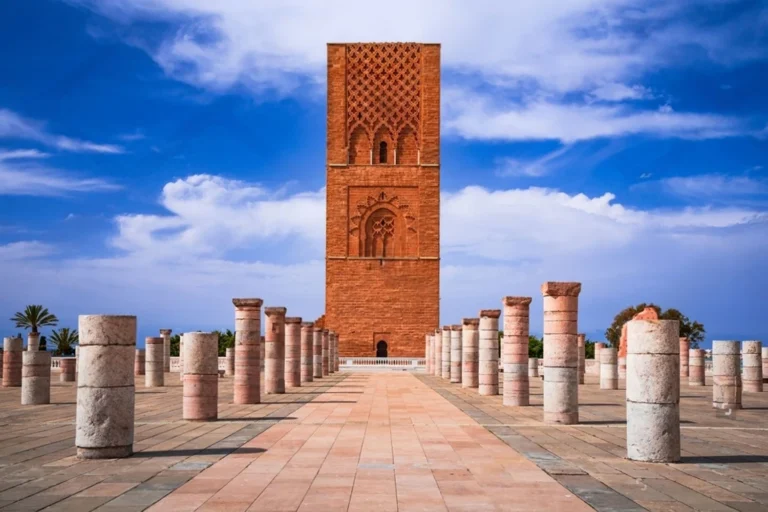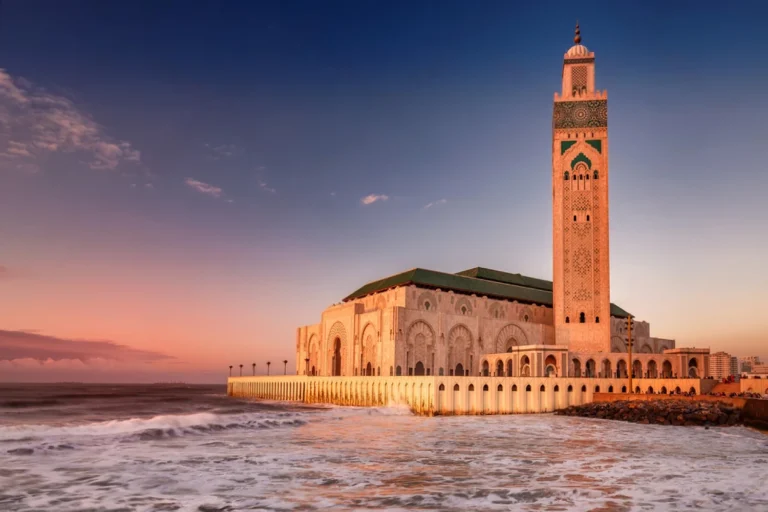Liverpool: 30 Unexpected Facts Beyond the Beatles Legacy
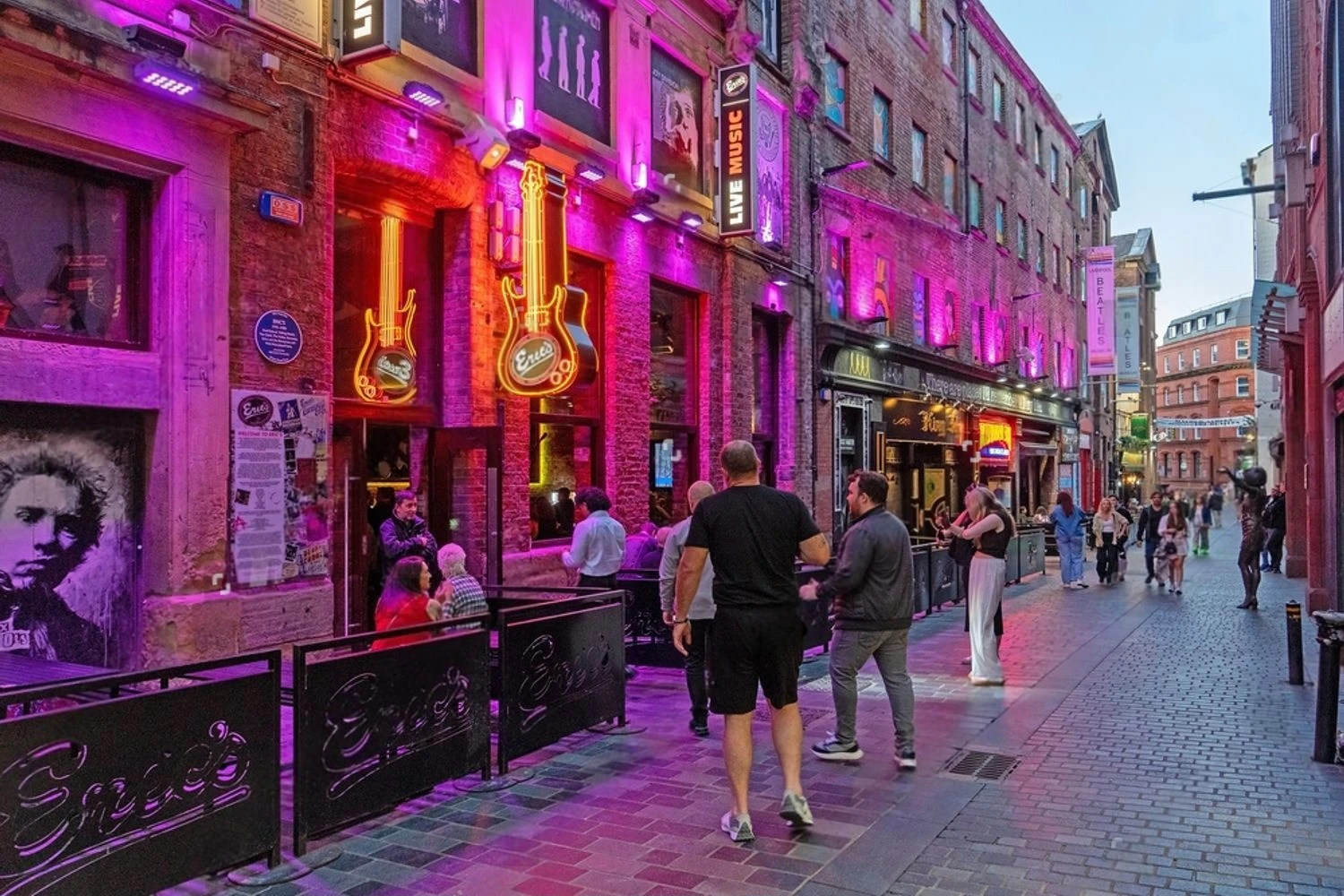
In Liverpool, the joy is in the quiet reveals the salt on the air, rain beading on brick, a laugh drifting from a doorway like turning a shell in your hand and noticing new curves each time it catches the light. Walk a little slower and small moments come forward, a door left ajar where warm lamplight touches a worn floor and the soft scuff of shoes moves along the steps. They make you feel less like a passerby and more like you’ve been gently invited in. These overlooked moments reveal a deeper spirit, the stories you sense more than you’re told.
Under 200 dragons, Europe’s oldest Chinatown hums
I remember pausing under the giant red arch, its paint gleaming after rain, and feeling the weight of journeys in its wood. A gift from Shanghai, sent in pieces across the sea and reassembled like a memory; if you look up, there are two hundred dragons curling along the beams, keeping quiet watch over the street.
On festival nights the road thrums drumbeats bouncing off shopfronts, lanterns shining like small moons, incense folding into the cool air. Even long after midnight, hot pots bubble and laughter rides the steam. The flavors are bold and familiar, recipes kept alive in low voices, passed from grandmother to grandchild at kitchen tables where measuring is more about memory than spoons.
What gets me is how steady it all feels. In Liverpool, this old neighborhood isn’t a museum piece; it’s alive and generous, making space for new stories without losing the old. You leave warmed by more than the broth, carrying a small, fragrant proof that traditions can travel oceans and still taste like home.
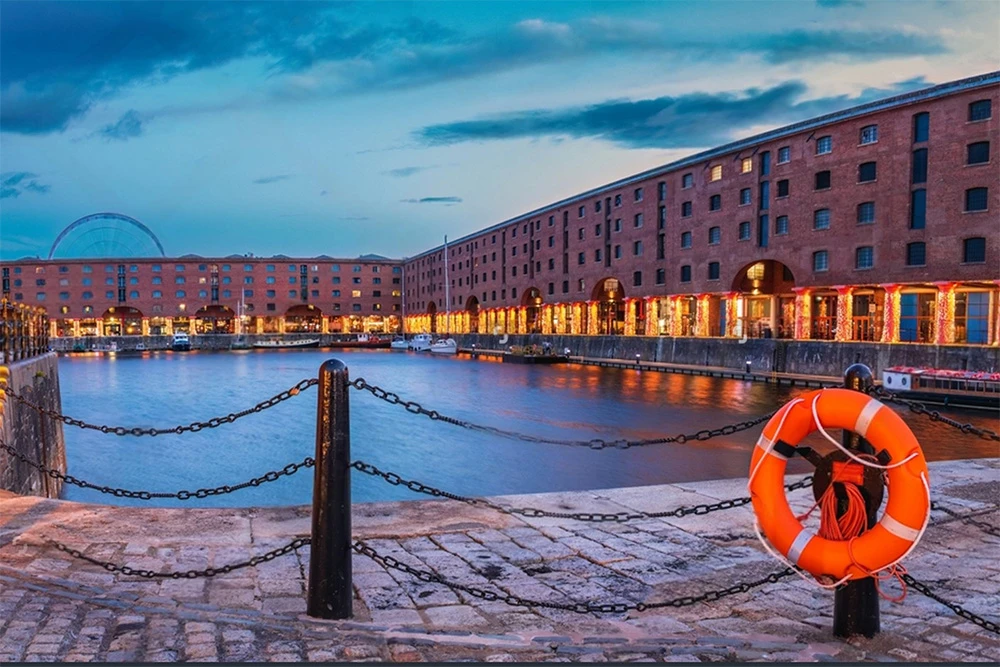
Candlelit tunnels and a riddle beneath the city
It’s the hush that gets you cool air, a faint sweetness of candle wax, brick made dark by the slow breath of time. Down here, the Williamson Tunnels curl and cross like a hand built maze under ordinary streets, and no one can say why Joseph Williamson wanted them at all. It feels like stepping into a thought someone forgot to finish.
Guides trade theories in the flicker: survival schemes, secret spirituality, or pure, endearing eccentricity. I remember smiling because each idea felt true in its own way, and oddly, very Liverpool humble, surprising, a little mischievous. Maybe that’s the gift of this place: a quiet, candlelit cathedral of questions. You come back up carrying a small glow, the sense that purpose isn’t always the point, and that mystery, when shared, can be its own kind of kindness.
Bella and Bertie, the Liver Building’s watchful birds
There’s something tender about a skyline with nicknames. Up on the Royal Liver Building, those great green birds have names – Bella and Bertie – and somehow that small kindness makes the wind feel friendlier. I remember standing by the water, the air smelling of salt and rain, and feeling that two patient beaks stitched to the sky were enough to calm a blustery day.
People say if they ever fly away, Liverpool will simply stop existing, and everyone tells it like a joke they half believe. So they’re secured with iron and a good dose of Scouse superstition, equal parts bolt and banter. Maybe that’s the real charm: the quiet faith that stories can steady a place, while those weathered guardians above the clock keep watch over the river and all the everyday lives below.

Six sisters who made headlines and hearts swell
I still picture an old newspaper in a cafe window, its edges the color of strong tea, showing six tiny knit caps in a neat row. Back in 1983, the world’s first all girl sextuplets arrived here and the news reached far beyond our shores; for a moment, strangers smiled at each other and the day felt lighter.
People still tell the story with a softness, as if joy learned a new shape that day. And that’s the thing about Liverpool: people remember together. You hear it in the way a nan says, “Six of them!” over a steaming mug, or how a bus driver chuckles about prams lined up at the chemist. It wasn’t just a medical marvel; it felt like six bright notes struck at once, a lullaby the city quietly carries.
More than music, a city of quiet firsts
I used to think this place was only choruses and record shop dust. Then someone mentioned that the modern crossword was born here, and I pictured inky squares and a rainy afternoon by the docks, a warm mug in hand while clues stitched themselves into sense. It felt like finding a hidden verse tucked inside a familiar tune.
The same restless curiosity led to a machine that could skim over water – the hovercraft – and even the humble football net, which has settled more playground disputes than any referee I’ve met. It says something about the character here: practical, a bit cheeky, always reaching for what might make ordinary life smoother.
And then there’s the first School of Tropical Medicine in the world, born in Liverpool, a port with ships from everywhere, so people here chose to understand the illnesses that arrived with the tides. I remember walking past its brick and glass, the air cool and clean after rain, thinking how invention here isn’t loud; it’s a habit of puzzling things out, moving a little easier, and looking after one another.
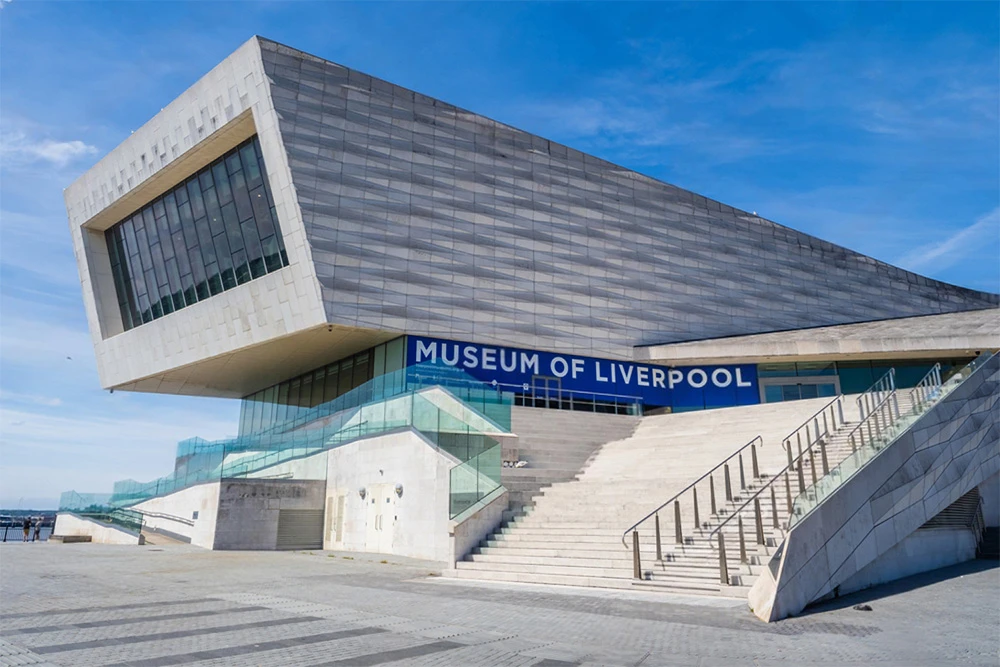
Red Rum’s echo at the Grand National
Some mornings feel like the track is remembering. The air is cool and damp, and from the quiet of the rails you could swear you hear a soft thud drifting through the mist. People smile at the rumor, but I remember pausing there and feeling oddly comforted, as if the ground were carrying a familiar heartbeat stitched into the turf.
They say the world’s greatest steeplechase has thundered since 1839 here at Aintree, and the legend everyone speaks of in a half whisper is Red Rum a horse so beloved it’s easy to believe he never truly left. Maybe those ghostly hoofbeats are less about spirits and more about devotion: the roar of crowds lodged in the soil, the courage of impossible fences, the way a place absorbs the hopes we bring to it. It feels like the race remembering itself, like a song the earth can’t help humming.
When a port minted its own pound for trade
It still makes me smile that a place could be so sure of itself it minted its own money. In the 18th century, when rigging creaked and salt rode the air, the Liverpool Pound clinked through taverns and along the docks, tiny circles of faith keeping the churn of trade moving. It feels so right for Liverpool cheeky, determined, and humming with work that the city wouldn’t wait for permission; it would simply make its own small answer to scarcity, like pocket sized promises passed hand to hand.
You can still meet those coins in the city’s museums, quiet now behind glass, their edges softened and stories sharpened by time. I remember leaning in and feeling the room fall away, imagining palms worn smooth by rope and rain, and the steady comfort of that metal weight. There’s something tender in it: a reminder that a city is more than buildings or legends it’s the trust people place in one another, stamped into coin and sent into the world.
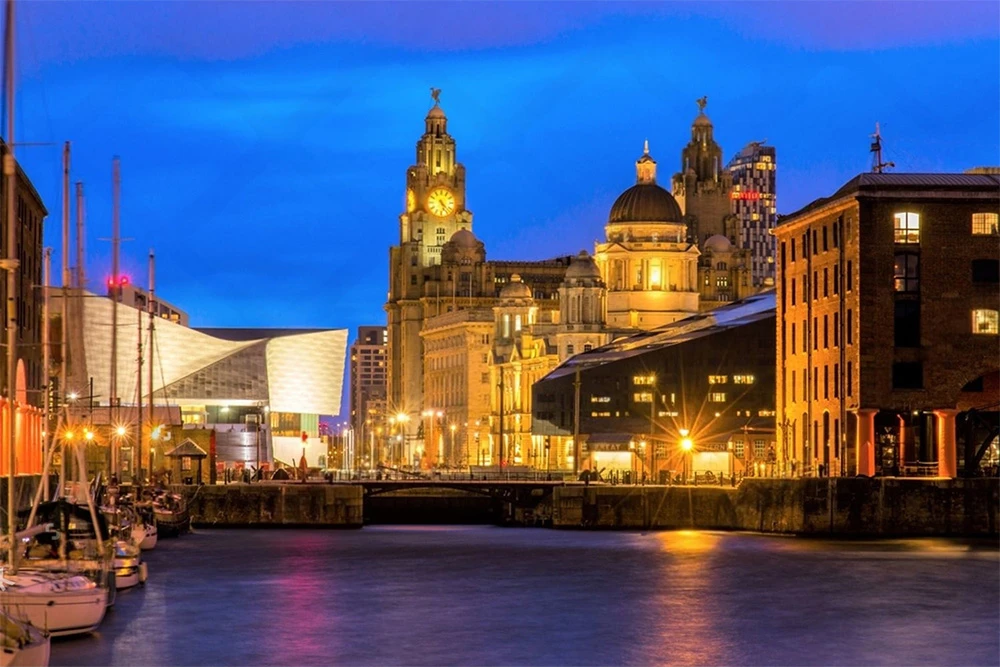
Victorian cool at St George’s Hall, summer’s secret refuge
There’s a certain kind of summer heat that turns stone into a slow oven, and that’s when St George’s Hall comes into its own. The UK’s first air conditioned building, it hides a Victorian tangle of pipes and fans that send a measured breath through grilles and corridors; if you pause, you can feel a gentle current at your ankles, cool and clean, with a hint of marble dust and polish. I remember that hush of air on a hot afternoon, the way it steadied my pulse like a hand on the shoulder.
Dickens felt it too; he stood here giving readings, and during a heatwave he adored the hall’s “draughty splendor.” I like to picture the rustle of programs, the cool sigh rising from the floor, his voice carrying easily because the air didn’t fight him. In Liverpool, that blend of showmanship and ingenuity feels exactly right – a place that keeps people comfortable so the stories can take center stage. It’s lovely, and a little surprising, to find the Victorians making a hot day bearable with nothing more than pipes, fans, and a confident idea.
History sleeping beneath the city’s bright shopping streets
Sometimes a city lets its past wink up at you. Near the John Lewis entrance at Liverpool ONE, I peered through a small pavement window and found a 300-year old dock resting like a heartbeat under glass the world’s first commercial wet dock, right there beneath the polished floor of everyday life. The light down there seems softer, steady as a held breath, and for a moment the noise above slips into the background.
What gets me is the contrast: trolleys clatter, coffee smells warm and sweet, and below, an old harbor waits in quiet patience. This city has a way of folding its tides into the present, reminding you that bustle and wonder can share the same square foot. I left feeling steadier, part of a larger timeline proof that even an ordinary afternoon can touch real history.
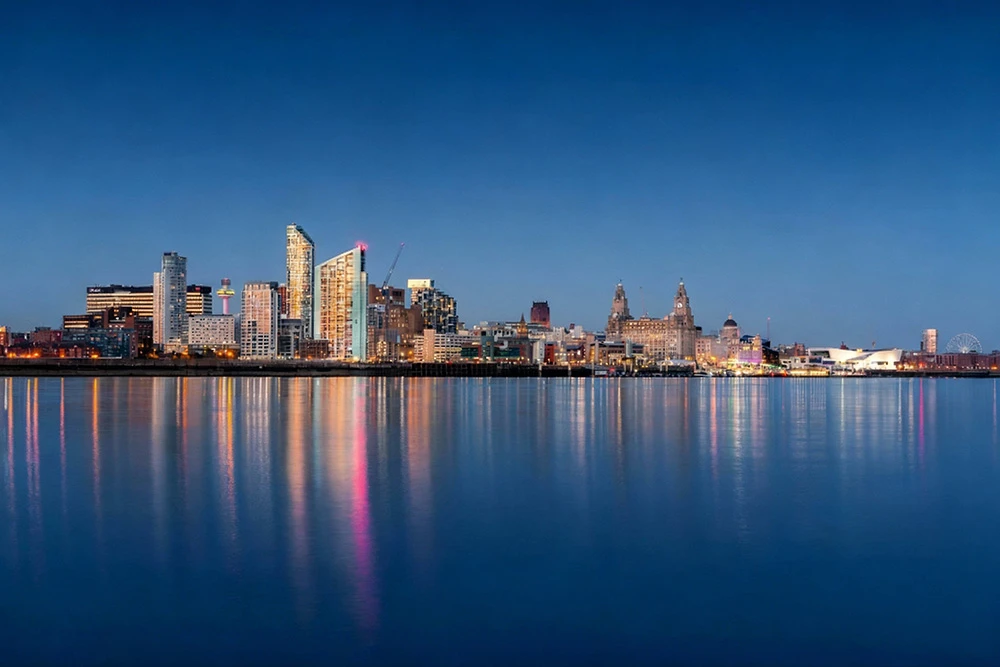
A colossal cathedral and a wind whipped Mersey view
The wind up there surprised me sharp and clean, waking the skin and ears at once. Standing by that mighty tower, you finally understand how vast it is: the largest cathedral in Britain, not just tall but deep, the kind of grandeur that hushes your thoughts and slows your breathing.
What stays with me is the audacity of it all: you can abseil down that very tower, or take the steps to the top for a view that feels almost otherworldly. It sounds outrageous, but in Liverpool it makes perfect sense; this is a city where boldness and tradition feel at home together, shoulder to shoulder without fuss.
From above, the Mersey stretches in muted silver, gulls tilting and crying, rooftops patched with sun and old soot. The cathedral waits steady behind you, a ship of stone moored above the water, and the wind seems to carry every decade at once dockland sweat, choir echoes, Saturday laughter. I remember feeling small in the best way, as if the city had taken a deep breath and made room for me too.
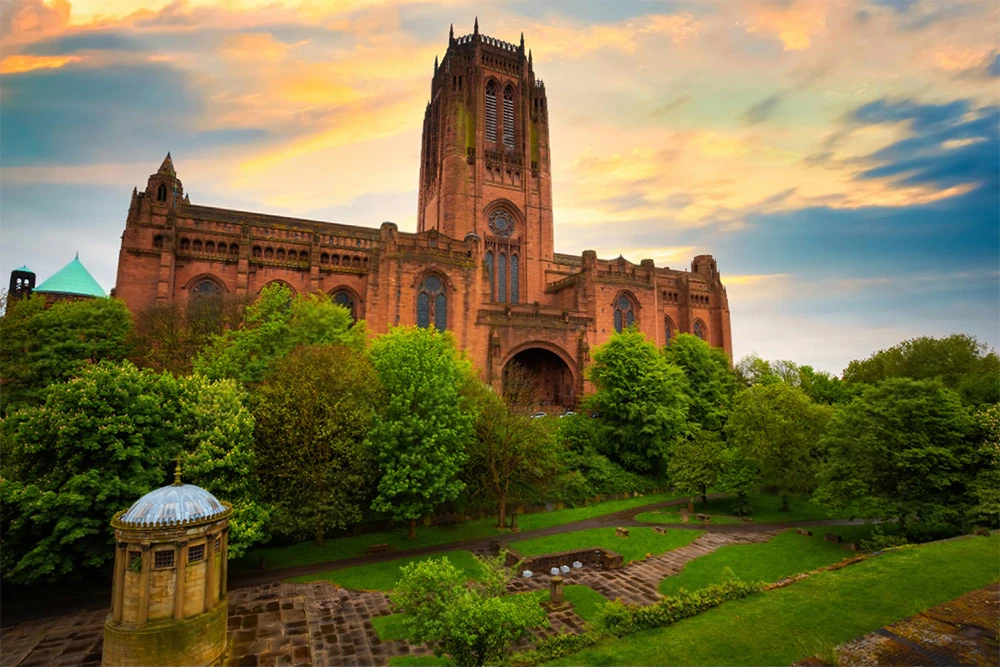
Hogwarts hush beneath a stained glass sky
Rain has a way of nudging you toward quiet, doesn't it? The Central Library, freshly renovated, holds that hush like a promise. Its reading room blooms under a vast stained glass dome, a soft kaleidoscope of blues and honeyed gold sliding across the tables. It’s the kind of place that makes the Hogwarts comparisons feel almost shyly accurate arches and shadows, lamps glowing like patient stars, the air carrying that peppery paper scent.
I remember tracing titles on centuries old manuscripts with my eyes, and that faint vanilla and dust smell rising from the pages. On a wet afternoon, the world narrows to turning leaves and shared silence, and you notice how steady your own breathing becomes. What surprised me most was how the place feels both grand and kind, an easy refuge where awe settles in and the rain can carry on outside.
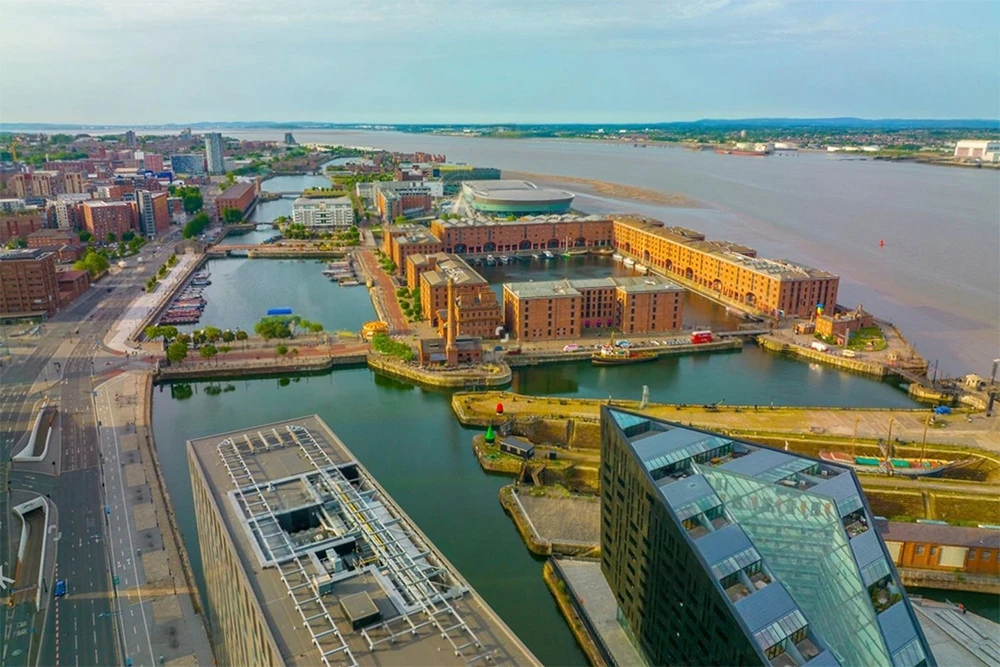
Where parks outnumber plans yes, even more than London
I came for the songs; it’s the green that lingers. People say it’s one of the UK’s greenest places, with more parks per person than London, and you feel it in the way the air eases your shoulders. The grass smells faintly sweet, blackbirds heckle from the railings, and the day relaxes those parks stitched through the map like green commas that let you breathe.
In Liverpool’s Sefton Park Palm House, the air turns warm and leafy damp, palms fanning overhead as light softens through Victorian glass. On some afternoons the concerts are free, and the notes climb the ironwork before slipping into the trees, while botanists and picnickers share the same patchwork of shade. I remember sitting there thinking how kind a city can be when it makes room for wonder, a greenhouse heart beating softly for anyone who wants to listen.
https://en.wikipedia.org/wiki/Liverpool
A pyramid keeps its bargain on Rodney Street
I still smile when I think about the pyramid crouched by the iron railings on Rodney Street. On damp evenings the stone turns slick, and the air smells of wet brick. Locals swear William Mackenzie chose that sharp angled tomb so he wouldn’t lie in the earth at all, hoping an upright afterlife might outfox the devil. The tale gets passed around in the hush of closing time, equal parts mischief and shiver.
Something about the story feels right for Liverpool, a city that understands wagers, tides, and luck. The pyramid sits there like a stubborn chess piece left mid game, weather taking its slow turns while people drift past with ordinary plans. I remember hearing it and feeling a quiet pause beneath the chatter – the sense that bravery can live in stone, and that people will try anything to bend the rules of fate.
Maybe that’s why it lingers: fear and defiance sharing the same address. When the wind skims the railings and the streetlights warm the sandstone, the legend softens into a steady reminder that even on a calm city street, we’re all negotiating with the dark in our own small ways.
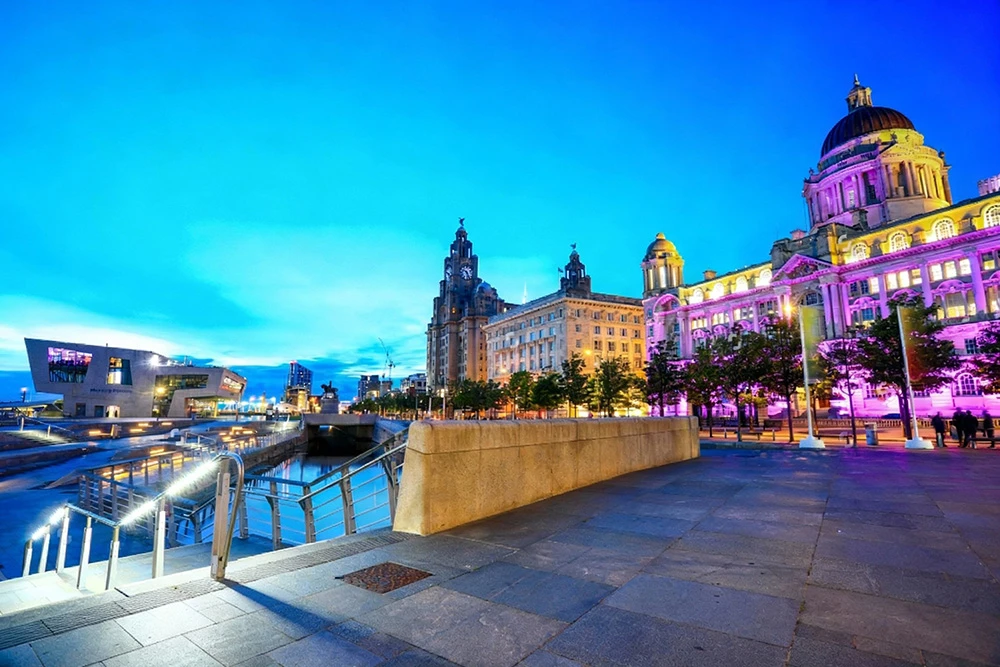
Ancient whispers carved into quiet park stones
I remember the soft hush in a green corner of Liverpool, where the Calderstones rest in a modest circle. Sunlight grazes the carved spirals and motifs, and the sandstone looks almost warm, its surfaces weathered to a gentle, grainy calm – like fingerprints left by time. The place smells faintly of damp leaves, and tiny rustles in the grass make the city feel far away.
These megaliths are older than the city’s earliest records, old enough to make the idea of history feel young. That kind of age doesn’t intimidate; it settles you. It’s a reminder that our questions aren’t new, that people stood here puzzling over seasons and stars long before any of us. For a breath or two, the day feels like a small doorway into the past – not to explain it, but to let you sense its nearness.
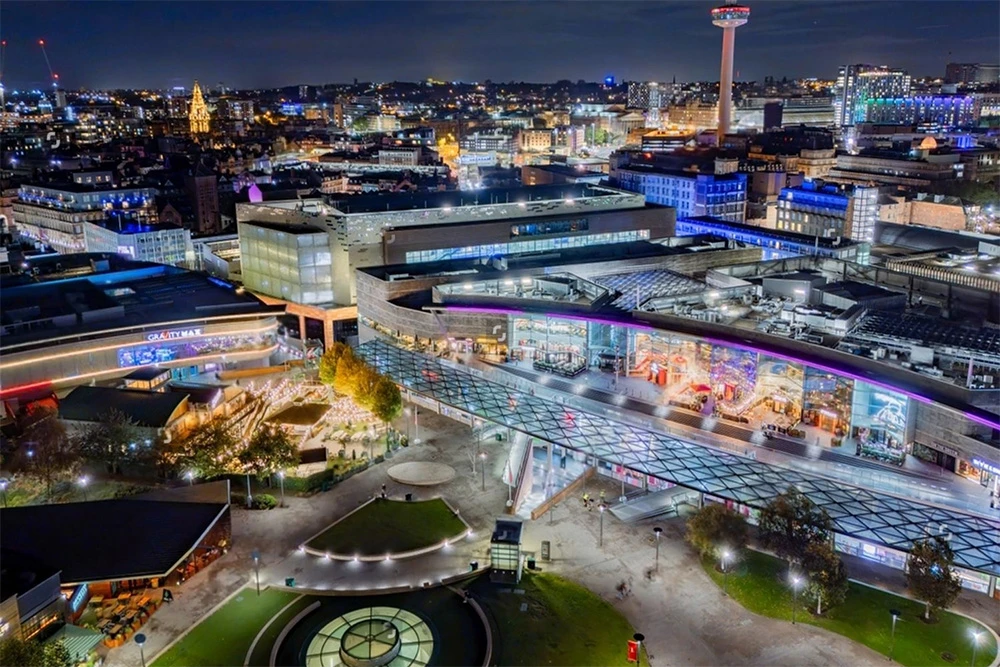
Borrowed palms, summer dreams on the Albert Dock
It always makes me smile: palm fronds trembling in a cool, salty breeze. They’re not from here at all – just borrowed beauties, carted in for the season to dial up the tropical mood. When the festivals start and music drifts over the quays, those palms do their job, casting coin sized shadows and a little bit of swagger. I remember the faint scent of sunscreen mixing with vinegar on chips, and thinking how cheeky it felt, like summer wigs for a city that loves a costume change.
Down on the Albert Dock in Liverpool, the whole thing feels like a playful promise – we’ll make our own tropics, thanks – and for months of festivals and sun seekers, it works. They’re honest props, too, hauled in with the light and whisked away when the days grow steely, and somehow that frankness makes them sweeter. Maybe that’s what I love most: the way this place refuses to wait for perfect skies, choosing instead to make its own weather and share it with whoever happens to be here.
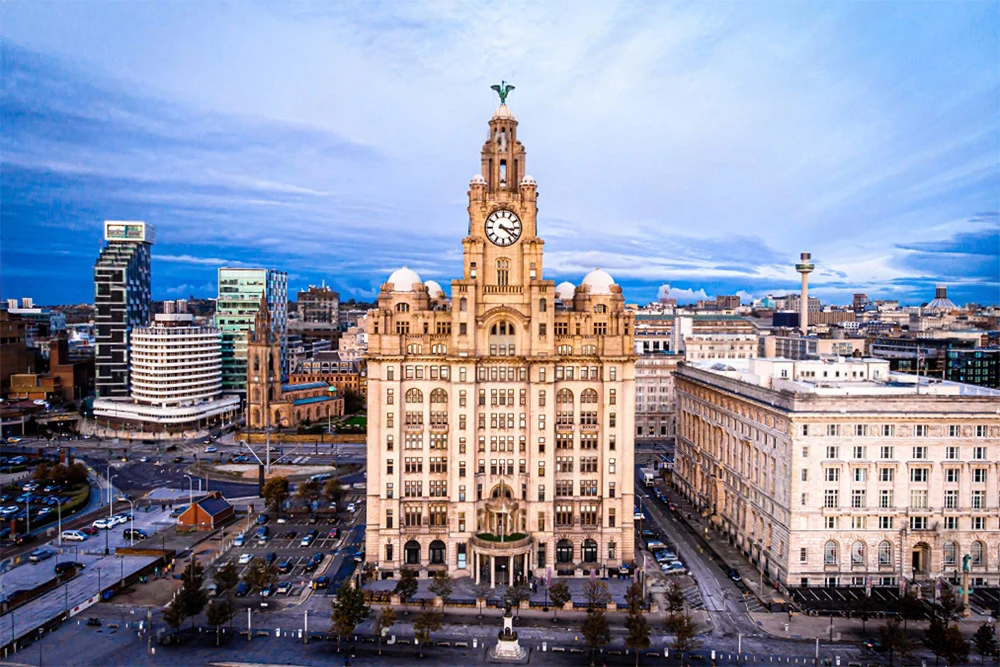
A tunnel that hides elegance in plain sight
I love when a city keeps a secret with style. Those handsome corner buildings you pass without a second thought the ones with neat stone ribs and deco flourishes are more than good looks. Someone once told me they’re the tunnel’s lungs, quietly pulling breath through ornate grilles, and I remember grinning at the nerve of it: vital engineering dressed up as everyday architecture.
Back in 1934, King George V opened the Queensway Tunnel under the Mersey, and the care shows in every detail; even now there’s a low, steady hum and a faint oil and iron scent that makes the street feel alive. It’s still one of Britain’s grandest secret engineering feats, an underground cathedral to motion, and I love the thought that commuters and daydreamers pass those façades daily, unaware of how beautifully the city does its breathing.
Streets that moonlight as cities on screen
I remember turning a corner and feeling the air shift; the columns seemed to straighten like old actors taking their mark. Rain glossed the stone, footsteps echoed under the arches, and for a second the street sounded like it was practicing an accent from somewhere far away.
They call it a film trail, and it makes sense once you notice how these neoclassical bones carry different stories. One side looks ready for New York’s clang and steam; tilt your head and it suggests the wintry poise of St Petersburg. You might find yourself on a sudden Bollywood street, or passing a doorway that feels like a stray subplot from Fantastic Beasts. That’s Liverpool’s secret trick: the city is chameleon enough to hold a dozen worlds without losing its own voice.
What stays with me isn’t the novelty, but the generosity of it – the way a place can make room for so many imaginations at once. Walking there, I felt quietly welcomed into that chorus of borrowed cities, as if the stones were saying there’s more than one way to belong.
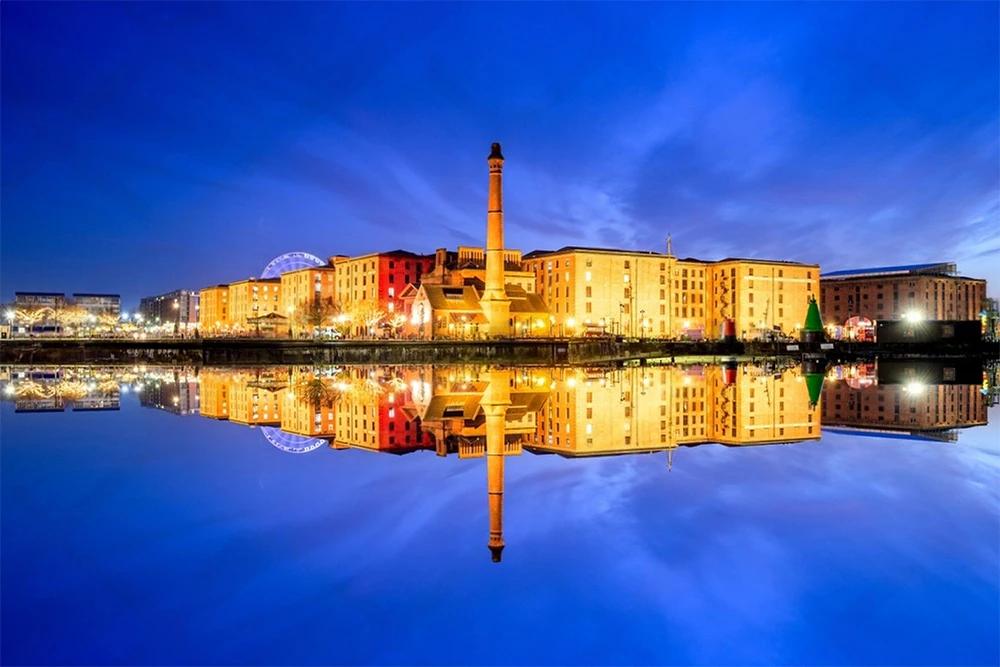
Where Merseybeat quietly began: the Casbah Coffee Club
It still makes me smile that the loudest revolutions begin softly, like a fuse lit in a low ceilinged room. Before anyone queued at the Cavern, all that restless sound was already warming up in West Derby, where a simple coffee club held the pulse of what was coming. The air must have tasted of strong brew and fresh paint, floorboards thudding with that nervous promise bands have before they know they’re famous.
I remember learning the murals weren’t just decoration but fingerprints swirls and stars brushed by John Lennon and, wonderfully, by Pete Best’s mum herself. There’s something tender about that: a mother painting the backdrop for the noise that would change the city’s life, applause once rattling teacups instead of stadium seats. The Casbah feels like a living relic, its walls like tattoos on memory, reminding you that pop culture’s big bang can start at home, with ordinary hands, in a room that believed before the world did.

The hidden nerve center of the Atlantic war
I still remember the hush in those rooms, the smell of paper and oil lingering like a stubborn tide. Maps lay spread under soft lamps, pinpricks marking fragile paths across grey water, and somewhere in the memory you can almost hear the tick of clocks and the faint hiss of a radio that once never slept. Beneath Liverpool’s streets, the Western Approaches HQ felt like the city’s second heartbeat steady, invisible, keeping life moving above while storms raged far out at sea.
What stunned me most was learning that D Day’s coordination ran through these very rooms, now preserved as a museum, as if time politely stepped aside and let the past keep its desk. You imagine hands hovering over chalk lines, voices kept low, decisions weighed against waves and weather, each choice nudging the fate of ships and shorelines. It’s a quiet kind of heroism no drumrolls, just pencil shavings, coffee gone cold, and courage measured in patience.
Something about it fits the spirit of the place: a port city that’s always listened for the horizon and answered back. Standing there, I felt that old care still humming in the wires, like holding a seashell to your ear and finding the sea hasn’t forgotten you. It’s humbling, and oddly tender, to realize a hidden room once held the thread that stitched a continent back together.

Tasting time travel in Liverpool’s beloved scouse stew
Funny how a humble bowl can hold a rumor. The first spoonful feels like weathered hands wrapped around a mug, steady and kind. Liverpudlians will tell you it’s Viking at heart, a seafarer’s survival that wandered ashore; scouse takes its name from “lobscouse,” the old sailor’s stew, and the word still clings like sea salt.
In Liverpool, scouse isn’t fancy it’s generous. Beef or lamb, root veg, onions gone sweet from hours on the hob, pepper drifting up in the steam, a thick slice of bread to catch what’s left. Try a bowl and you don’t just eat; you taste the city’s working past, the docks and winter winds, the way people here turn hardship into warmth.
I remember a rainy afternoon, glasses fogging as the bowl warmed my palms, and feeling suddenly at home. It was history you could taste, simple and proud, and it left me with that quiet, full body comfort that lingers long after the last spoonful.
A café that brunches, sips matcha, then dances
Some places feel like the city’s heartbeat changing tempo through the day. Love Thy Neighbour, tucked right in the city center, is one of those gentle shape shifters. Morning there smells of warm cups and green matcha steam, the kind that settles your shoulders. And their chickpea pancakes – nutty, crisp edged, a little sunshine on a plate – could stand toe to toe with the fanciest brunches I’ve chased in bigger cities. I remember thinking how quietly confident it all was, like the food didn’t need to shout to be unforgettable.
By evening, the lights dim, the bass thrums softly, and this hybrid spot slides from café to bar to restaurant like a friendly chameleon. You can linger over brunch that stretches into stories, then realize the room has lifted into a small dance floor where strangers feel like neighbors. It’s the kind of place that holds your whole day without fuss – where comfort and celebration share a table, and you leave feeling the city has been kind to you.
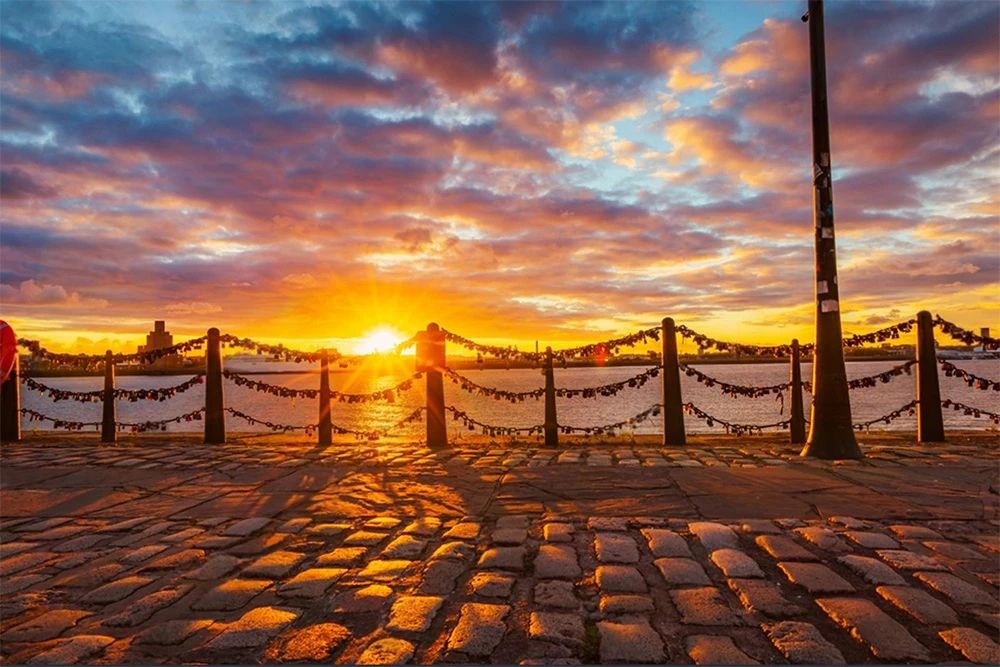
A secret gin garden blooms among graffiti
I love when a rough corner suddenly softens into green. One minute it’s paint splashed brick and warehouse hush; the next, deckchairs, ivy, and the low hum of friends comparing crisp juniper notes. The Botanical Garden on New Bird Street feels like the city exhaled a green sigh and forgot to take it back.
What gets me is how a once forgotten pocket of Liverpool’s Baltic Triangle has become a leafy social oasis, held together by murals and the soft clink of ice. I remember the sun slipping behind rooftops, rosemary brushing my sleeve, and feeling that mix of grit and tenderness this city does so well like creativity finding its roots without asking permission.
Extinct Liver bird, living in accents and skyline
Funny how a place can be haunted by a creature you’ll never meet. There was once a native bird here, black and white and stubbornly local, and though it’s gone, its mythic silhouette perches everywhere – in stone on rooftops, in iron on gates, in the corners of old pub signs. On damp mornings by the river, with salt in the air and gulls wheeling, you can almost feel it watching. Liverpool wears that watchfulness well, the Liver bird stitched into the skyline like a quiet guardian.
Say “Li vah pool” out loud and you’ll hear the city smile back. I’ve had that pronunciation turn into a gentle unraveling of history, the kind passed along with a wink and a story about where the bird flew from, and why it stayed even after it vanished. There’s pride folded into those soft vowels, the kind that tells you the past is close enough to touch. And I love that – how an extinct bird survives in the way people speak, in carved wings over doorways, and in the feeling that this place remembers you, too.
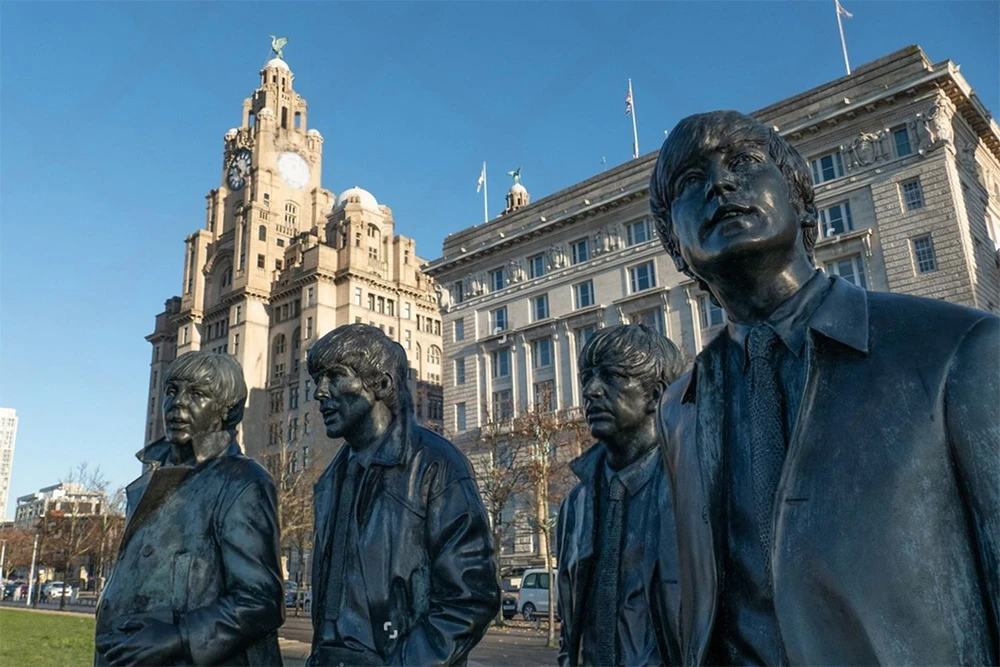
Preserved neighborhoods and a hidden canopy called Queen Avenue.
Some cities sprint; this one lingers. Whole streets are kept intact, the kind of Grade II façades that make you lower your voice without knowing why. Paint soft with age, iron railings cool under the hand, footsteps clicking on old stone – time feels stitched into brick, and the everyday turns strangely tender.
And then there’s Queen Avenue, tucked off Castle Street like a wink. A glass canopy softens the daylight into a quiet, greenish glow, and even the air feels careful, carrying the faint scent of paper and polish. I remember the hush there, that small, surprised joy of finding something whimsical in the middle of a workday city, a pocket watch hidden in the coat.
That’s the trick Liverpool keeps pulling: the past feels present without fuss. People who’ve lived here for years sometimes pass right by that passage and never see it, and I love that – it means the city can still hand you a small wonder when you weren’t asking.
When a Queen Wouldn’t Cross a Doorway Again
It still makes me smile that even a queen can be undone by a whisper in the dark. They say Queen Victoria refused to step inside Liverpool Town Hall for years after a ghostly figure startled her in the cellars during a visit – the air turning pin‑drop cold, stones smelling of damp and old wine, the kind of hush that lets your thoughts run louder than your footsteps. Buildings collect stories like lichen on stone, and that one clung for generations.
What I love is how the tale makes power feel human: even a monarch can be rattled by something we can’t quite name. In a port known for tall tales and stubborn humor, the rumor became a kind of heirloom, like a pearl formed around a grain of sand – a small shock reshaped into something quietly beautiful. I remember thinking we all have thresholds we won’t cross for reasons that live in the bones, and maybe that’s the gentlest part of superstition: it leaves room for wonder when certainty has nothing left to say.
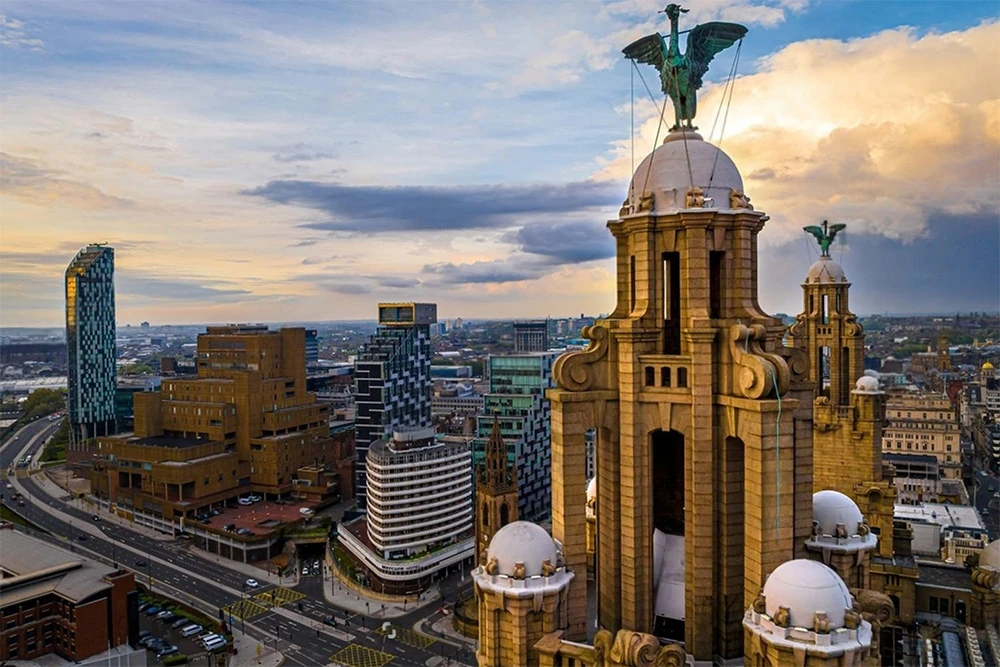
Where the streets hum in sixty languages
Some cities greet you with a skyline; here, it's voices. At a bus stop the salt air mixes with bakery warmth, and more than sixty tongues weave through an ordinary morning laughter, lullabies, a quick joke tossed across the street. I remember catching only fragments and still feeling included, like the chorus knows your part before you sing. This is Liverpool.
Nearly half the people you meet have roots somewhere else, which explains the soft instinct to make room, to ask how you say hello and mean it. Once, a barista taught me her word for welcome and the next customer offered his; the counter turned into a long table set with borrowed spices and old family recipes. It’s surprising at first, then obvious: the spirit here is simple stories and accents live side by side, and home can be plural.

When Liverpool and Shanghai Share the Sky
I remember an autumn evening when the air tasted of salt and woodsmoke, and the Mersey turned into a silk ribbon catching sparks. It still surprises me that Liverpool and Shanghai have been twins since 1999, and that the celebration keeps blooming overhead each year – loud chrysanthemums of color scattering across the water. In that hush before the first burst, you feel the city hold its breath, and then the sky answers with a bright yes.
What I love is how it feels less like a show and more like a conversation. Two old port cities swapping stories without words, postcards of light passed back and forth, reminding you that harbors are made for meeting halfway. I always leave those nights a little warmer inside, as if the world had folded in, closer and kinder, and the river had just reminded everyone how far friendship can travel.

Where streets moonlight as Victorian London and more
I remember turning a corner and feeling time tilt. The red brick, the iron balconies, the cobbles holding a breath of damp and smoke – you can almost hear Shelby’s boots and Sherlock’s quick stride in the same echo. The street wears fog like a memory.
In Liverpool, crews barely have to ask and the city obliges: Peaky Blinders broods here, Sherlock schemes, and even Fast & Furious 6 once thundered through with a grin. I laughed at how one block can hold hoofbeats and tire smoke in the same hush, like the past and the present sharing a cup of tea.
There’s something comforting about a place that can be many eras without losing itself – a quiet confidence in its bones. It made me notice how stories and cities borrow from each other, and how familiar that feels, like stepping into a scene you’ve loved and finding it gentler in daylight.
A friendly code hidden in everyday street talk
I remember the first time someone leaned over a pint and said, “You aright, la?” The room smelled faintly of salt and vinegar while a jukebox hummed, and suddenly words felt like winks: jarg, boss, la. They arrive quick and playful, and if you trip on them, the laughter is kind more of a nudge than a sting, like a scarf tossed around your shoulders.
What surprised me is how this slang doesn’t lock the door; it opens it. In Liverpool, talk is a secret handshake that pulls you into the circle until you’re part of the joke. You learn that boss simply means brilliant, and the city loves to call things boss a tune in the pub, a sunset over the docks, the small sweetness of being called la. It’s warm, cheeky, and honest, the sound of a place that teases you into belonging.
Tall ships and wakeboards share the Mersey
There’s a moment when the river turns into a stage, and you can hear it in the mix of creaking rigging and bass lines rolling across the water. I remember the wind carrying salt and frying onions, gulls heckling from above while old wooden masts drifted past like patient elders, steady and tall.
Then the wakeboarders cut in, skimming the surface with fearless grins, spraying arcs of glittering water like confetti. People lined the docks and the breezy beaches, kids on shoulders, friends sharing paper cones of hot chips, everyone cheering at the same time for different reasons some for the graceful sails, some for the flips and wild splashes. It felt like watching two eras shake hands.
What I love is how it says something about Liverpool without trying: tradition and mischief, side by side, as natural as tide. The live music spills across the river, the food stalls smell like sweetness and spice, and for a few hours the Mersey carries past and present in the same current. You leave with wind tangled hair and that fizzy feeling that comes from being part of a crowd that believes in joy.
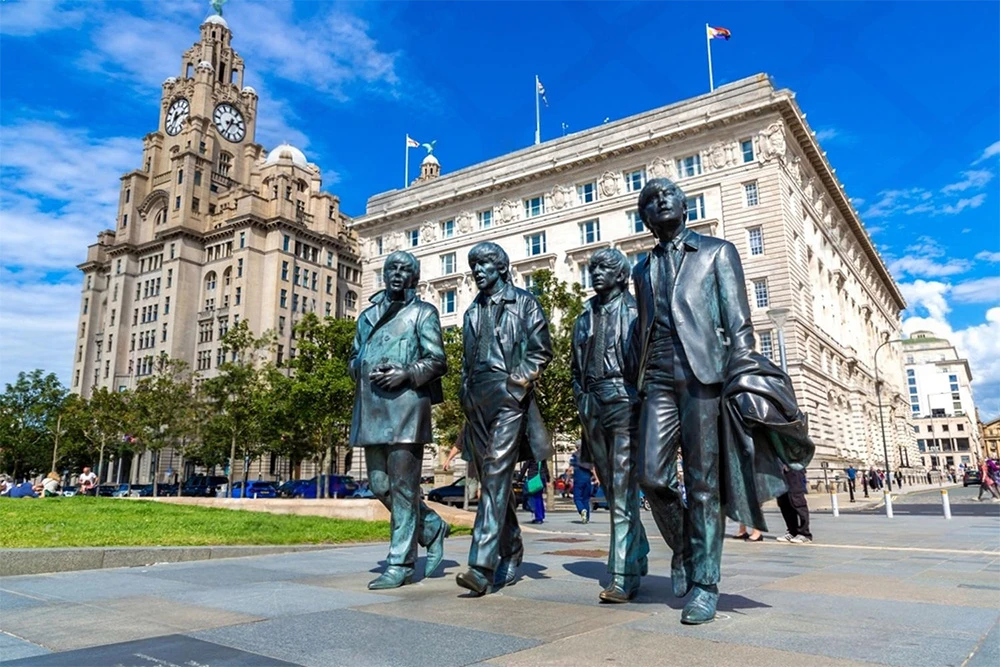
Final thought
Amid hidden stories, small details, and human moments, you notice the truer side of Liverpool. It isn’t loud or grand; it’s found in the way people look out for one another, in quiet corners where you slow down, in the honesty of ordinary days. Taken together, they feel like a mosaic, quiet pieces clicking into place until you finally see the whole. Carry that feeling with you, and step forward inspired.
